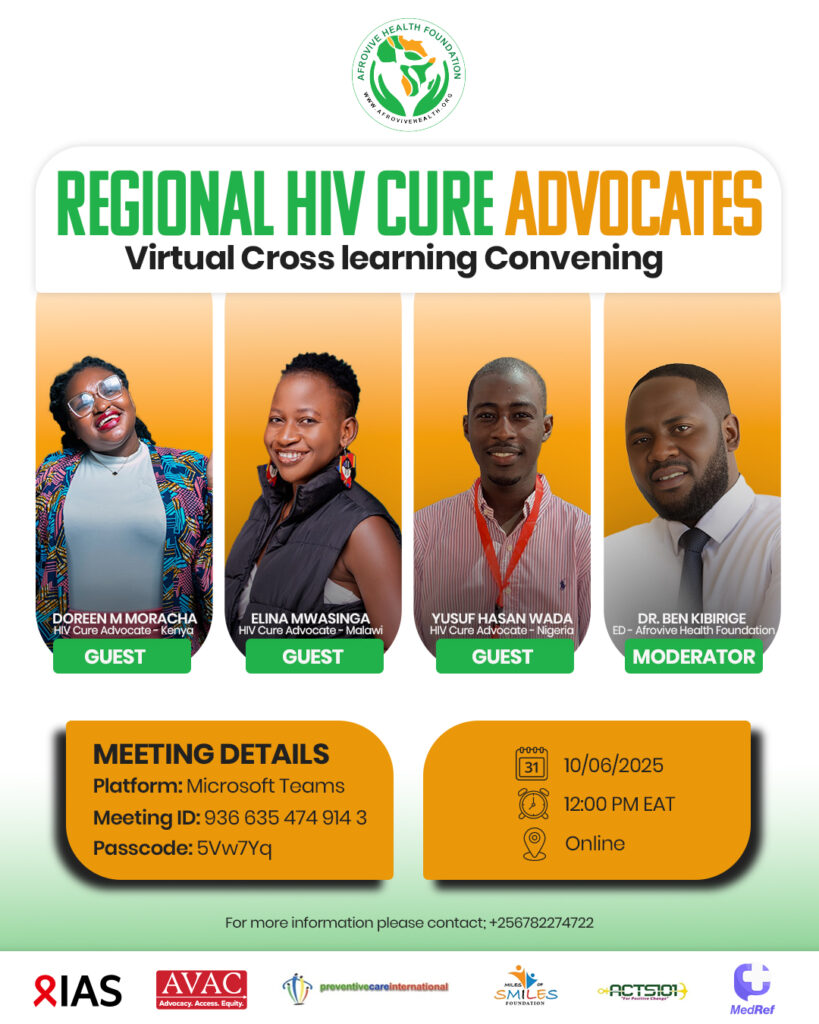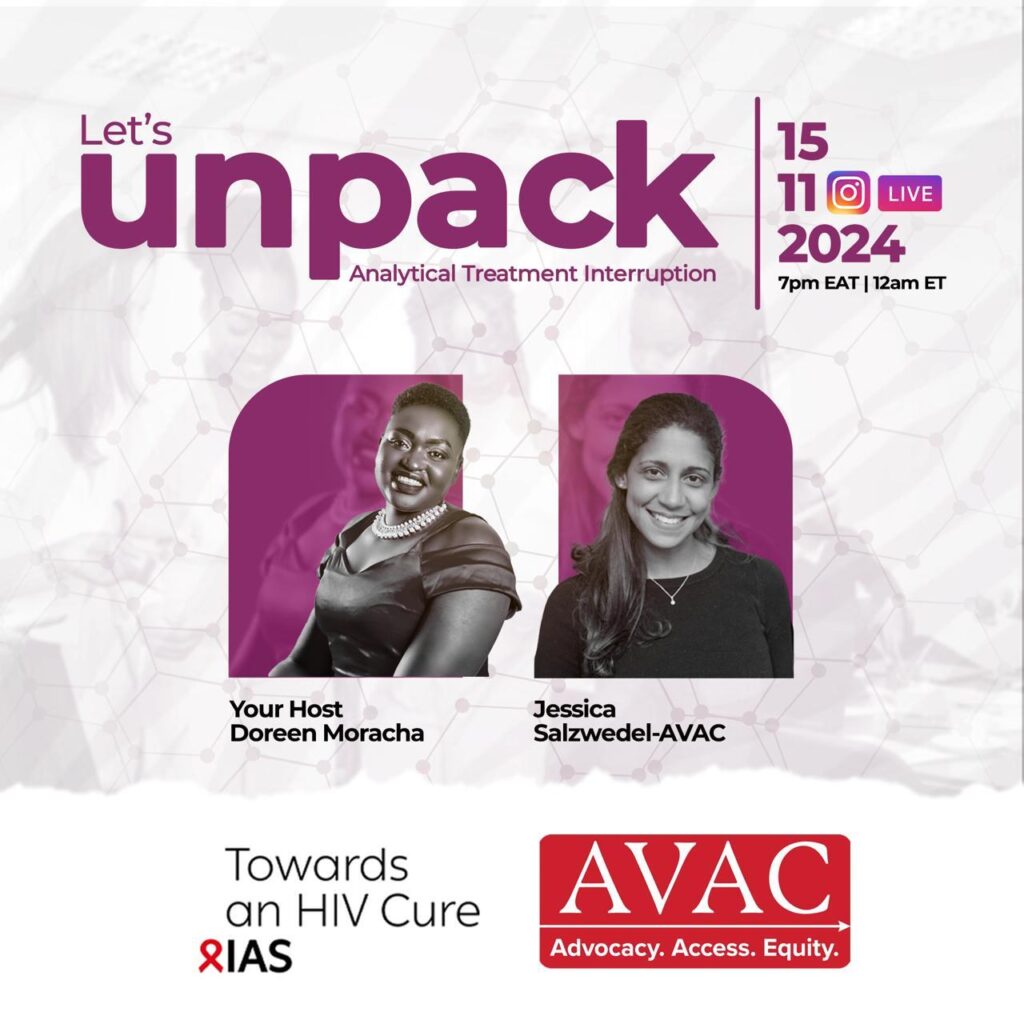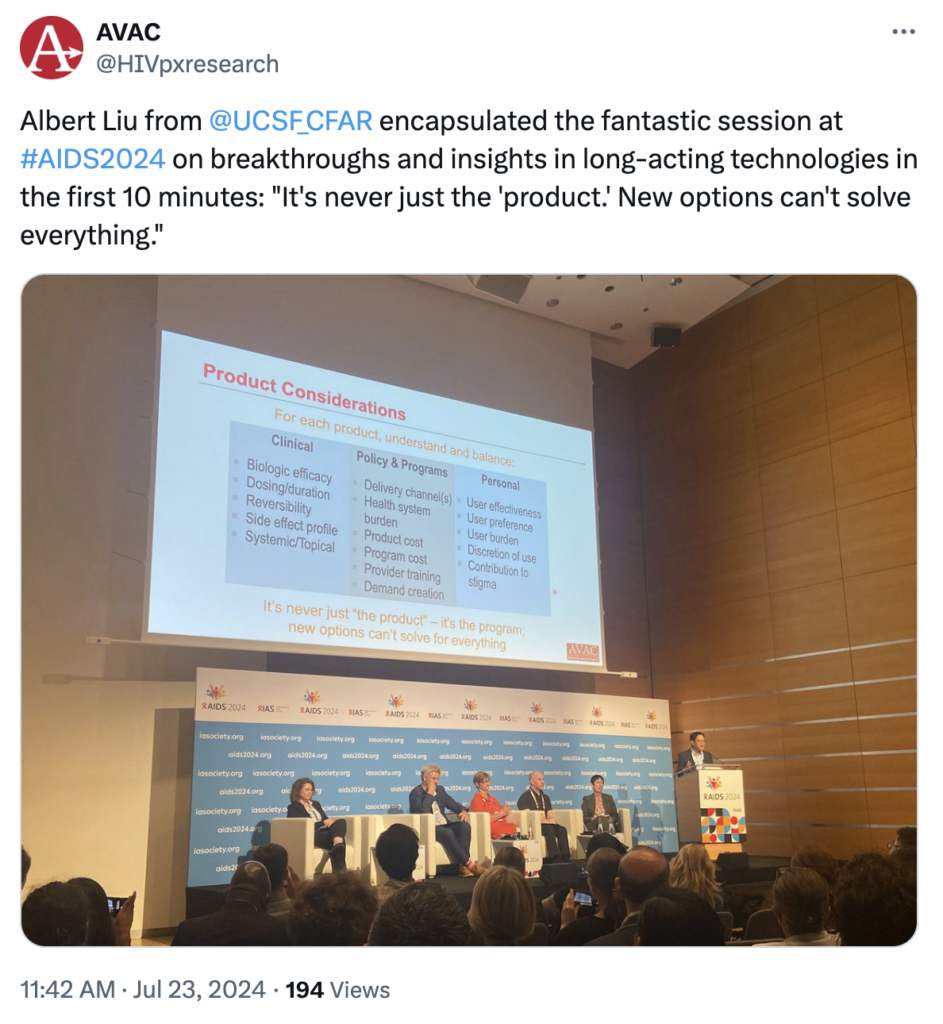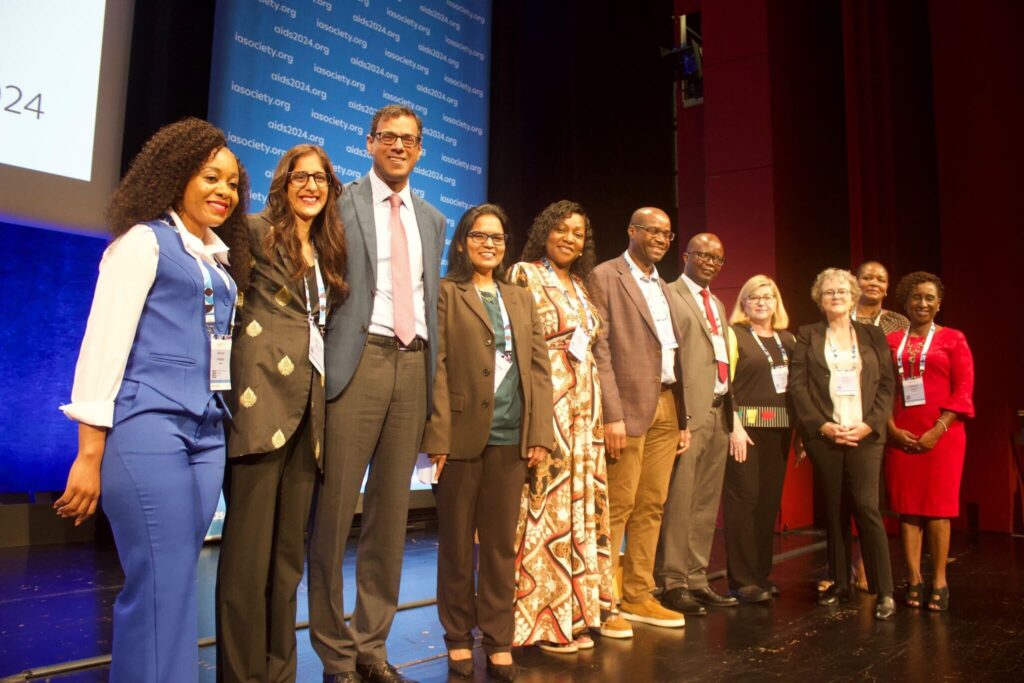This year’s Conference on Retroviruses and Opportunistic Infections (CROI) in Denver, Colorado, was the setting for important updates on the HIV reservoir lending to new insights into potential cure strategies. AVAC’s Senior Program Manager for Research Engagement, Jessica Salzwedel, leads AVAC’s advocacy for HIV cure research and serves as the community engagement coordinator for three of ten NIH-funded international collaboratories: the Research Enterprise to Advance a Cure for HIV (REACH), Immunotherapy for Cure (I4C), and Pediatric Adolescent Virus Elimination (PAVE). These are aimed at developing therapeutic interventions to cure HIV infection. Jessica shares her highlights from the research and what it means for advocacy.
There was so much on HIV cure presented at CROI. What stood out to you as most important for advocates to follow?
I was really excited to see advances in both basic science and clinical research. Four results in preclinical and clinical research stood out because they advanced how researchers might tailor cure strategies to optimize the impact for people with HIV. We heard more about the potential role of sex hormones in directing the immune system in a study looking at fetus acquisition of HIV by Gabriela Cromhout. Another study by Toong Seng Tan of the Ragon Institute showed that women may be better candidates for the so-called “block and lock” strategy. We also heard results from IMPAACT P1115 trial by Deborah Persaud, which showed that early HIV treatment can lead to control of the virus in children. Finally Maurico Martin’s nonhuman primate study of adeno-associated virus, which delivered broadly neutralizing antibodies (bNAbs) and may offer a pathway to a scalable, durable control option for pediatric cure. In basic science, Katherine Bar presented data that suggests researchers, and by default advocates, should be looking at autologous neutralizing antibodies in some people to delay rebound. And finally, I’m excited about early-career investigator Louise Leyre’s research out of Weill-Cornell, which is looking at rare T-cells that seem to resist killing, which could be important in developing strategies that could lead to durable control and eradication of HIV.
Can you break down the research on sex hormones? Will biological sex play a role in cure strategies?
We’ve got more evidence now that biological sex plays a role. Cromhout showed differences in HIV acquisition between male and female fetuses in utero, building off data she presented at IAS 2023. This data analyzes the virus from a cohort of 281 mother-infant pairs. Her team found that male fetuses tend to acquire a “high fitness” virus sensitive to IFN-1, a first-line immune defense, while female fetuses acquire a “low fitness” virus resistant to IFN-1. Viral fitness refers to the ability of the virus to replicate. Cromhout showed that the acquisition of HIV in utero is driven by the immune system of the fetus and not differences in the virus of the mothers. Understanding the host-virus relationship, and how the immune system puts pressure on the virus to change in the early stages of infection is important for directing future cure strategies.
In the study of people with HIV who have long-term suppression via ART, presented by Toong Seng Tan from the Ragon Institute, biological sex is a factor in determining reservoir composition over time. Tan looked at intact versus defective proviruses (the pieces of HIV that have integrated into DNA) as well as where HIV had integrated into a person’s DNA. He did not find any significant difference between the amount of intact virus (which can cause harm) and defective virus between men and women. But women had a higher portion of HIV integrated into areas of their DNA that were “transcriptionally silent”, meaning HIV could not rebound, after long-term suppression on ART. The women in the study were all post-menopausal at the time of enrollment, so more work is needed to understand how hormones shape reservoir characteristics in women, both cis and trans, at younger ages. The results suggest that women may be better candidates for a cure strategy under investigation known as “block and lock”. The strategy is trying to drive HIV deeper into latency so it cannot rebound.
We’re seeing more results on children’s ability to control HIV off treatment, how significant is this?
This is significant, but we know early treatment is not for everyone. Deborah Persaud of Johns Hopkins University presented the results of IMPAACT P1115, which enrolled 54 infants who acquired HIV in utero and received combination therapy within 48 hours of birth. Six children met the criteria for an analytic treatment interruption (ATI). These criteria were sustained viral suppression from 48 weeks onward, normal CD4 count, negative HIV serostatus using a highly sensitive assay, and no detectable virus. Of the six children who underwent an ATI, four achieved durable control, defined by the study as remaining undetectable over 44 weeks. One of the four controllers rebounded at 80 weeks while the other three remain on an ATI. Two of the six children who met the criteria for ATI rebounded at eight and ten weeks respectively. The study confirms that early treatment can lead to control of the virus in some children; however, it is not a strategy for all. Even with the vastly reduced reservoir size caused by almost immediate treatment, the virus is not completely eradicated and may rebound in some children off therapy.
Another study, this one in nonhuman primates, presented by Maurico Martins of the University of Florida, showed promising progress toward a 4-dose single injection regimen that led to durable control in all animals treated with the investigational product. This study evaluated the adeno-associated virus (AAV) vector delivering antibodies. AAV is a unique platform because it has been shown to last for the duration of the cell. This study is targeting muscle cells, some of the longest-lived cells in the body, to deliver the AAV vector. The next step is to move this strategy into human clinical trials. This approach could offer a durable, scalable and cost-effective way to control or cure pediatric HIV.
For advocates new to cure, why is the reservoir important and what can you tell us about these rare T-cells and their role?
The “reservoir” is the collection of cells that have HIV integrated into the DNA but are not replicating. They are important because once cell replication begins, so does virus production. In the absence of ART, this is the cause of rebound. At CROI, we saw several advances in basic understanding, targeting and reactivating the reservoir. Early-career investigator Louise Leyre of Weill-Cornell presented research on a potential mechanism for why a small subset of HIV-infected T-cells resist being killed by natural killer cells. These rare HIV-infected T-cells are “slippery and squishy” and avoid being killed due to weak adhesion proteins on the cell surface. This prevents the killer cell from attaching properly. This is important for cure research because a small subset of cells can lead to viral rebound off therapy. Identifying why some cells resist killing is important to develop strategies that can lead to durable control and eradication of HIV.
Lastly, I wanted to highlight Katherine Bar’s presentation on the potential of autologous neutralizing antibodies. Autologous neutralizing antibodies are the antibodies the body makes against the virus. In natural infection the virus is always one step ahead. When treatment is started, virus evolution pauses. To see what role autologous antibodies play, Bar tested the sensitivity of the reservoir and rebound virus of trial participants in the BEAT-2 trial, which evaluated the impact of a combination of bNAbs (3BNC117 and 10-1074) and type 1 interferon (IFN-1) with an ATI against the autologous antibodies. When a researcher says “testing sensitivity” they are looking at whether a virus is neutralized by an antibody or not. Bar and her team found that the two participants who experienced delayed rebound in the trial had reservoir virus sensitive, meaning it could be neutralized, by autologous antibodies. This may have delayed rebound after the broadly neutralizing antibodies waned from their system. It is important for cure research because autologous antibodies may be another approach to increase the duration of control off therapy. Researchers may look at approaches to enhance these antibodies before a treatment interruption in future combination approaches.
So, what are our key points for advocacy coming out of CROI?
- Diversity matters. It is critical clinical research includes participants from all geographic locations, age, and sex.
- Cure will not bring a one-size-fits-all strategy, and it is important to learn the combination strategies currently being pursued in clinical research as well as the future strategies that basic science discovery is generating.
- There are still basic questions that need to be answered for researchers to find a safe, scalable, durable and affordable cure. Advocates should follow the science and encourage funders to continue to invest, build community and research infrastructures to translate knowledge, and prepare for future clinical research.








